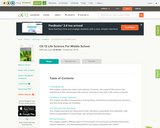
Protist Nutrition
Covers the different techniques protists use to gain nutrition.
- Subject:
- Life Science
- Material Type:
- Lesson
- Reading
- Unit of Study
- Author:
- CK-12
- Doug Bowman Photography
- Date Added:
- 02/13/2019

Protist Nutrition
Covers the different techniques protists use to gain nutrition.
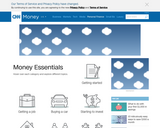
Great entry level resource to a large variety of financial literacy documents ranging from investing to buying a car to starting a family (and more!).

In the wake of recent acts of gun violence in America, both citizens and politicians continue the debate over gun control in the United States. Legislation addressing issues like background checks, concealed carry permits and bump stocks have been suggested to address this issue. This deliberation will allow students to explore the roots of gun control in the United States while also exploring varying viewpoints on how to address the problem of gun violence in the future.

Lesson Description
Students compare different algorithms to find the best method of sorting a group of unknown weights in order. Students practice a Selection Sort and Quick Sort. Additional variations include:
Insertion SortBubble SortMerge Sort
The lesson also introduces students to the concept of recursion.
Online Resources
Online resources include a step-by-step downloadable Lesson Plan. The webiste also provides a YouTube video, photos, related resrouces, and additional curriculum links.
Introduce students to Binary and Algorthims prior to conducting this Algorithm Sorting Activity

In order to challenge the emphasis on extreme economic individualism espoused by Gilded Age industrialists and laissez-faire theorists, labor writers drew on diverse historical and religious traditions. Jose Gros, writing in The Carpenter in 1895, turned to religious traditions, specifically the biblical parable of Cain and Abel. Gros used the parable's central question--"Am I my brother's keeper?"--to criticize economic individualism and make the case for cooperation and brotherhood.
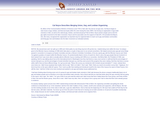
An officer of the Communications Workers of America Local 7704 in Salt Lake City and an out gay man, Cal Noyce began to raise issues of gay, lesbian, and bisexual equity within the union during the early 1990's. By forming an organization of gay trade unionists in Utah, as well as the national gay, lesbian, and bisexual group Pride at Work, Noyce joined a larger push to link the gay rights movement to the labor movement. Noyce and his associates won the support of Utah AFL-CIO president Ed Mayne, who, like many, recognized the organization as important way for organized labor to reach out to gay and lesbian communities and bring gay men and lesbians into the labor movement as motivated activists.
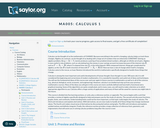
This course begins with a review of algebra specifically designed to help and prepare the student for the study of calculus, and continues with discussion of functions, graphs, limits, continuity, and derivatives. The appendix provides a large collection of reference facts, geometry, and trigonometry that will assist in solving calculus problems long after the course is over. Upon successful completion of this course, the student will be able to: calculate or estimate limits of functions given by formulas, graphs, or tables by using properties of limits and LĺÎĺ_ĺĚĺ_hopitalĺÎĺ_ĺĚĺ_s Rule; state whether a function given by a graph or formula is continuous or differentiable at a given point or on a given interval and justify the answer; calculate average and instantaneous rates of change in context, and state the meaning and units of the derivative for functions given graphically; calculate derivatives of polynomial, rational, common transcendental functions, and implicitly defined functions; apply the ideas and techniques of derivatives to solve maximum and minimum problems and related rate problems, and calculate slopes and rates for function given as parametric equations; find extreme values of modeling functions given by formulas or graphs; predict, construct, and interpret the shapes of graphs; solve equations using NewtonĺÎĺ_ĺĚĺ_s Method; find linear approximations to functions using differentials; festate in words the meanings of the solutions to applied problems, attaching the appropriate units to an answer; state which parts of a mathematical statement are assumptions, such as hypotheses, and which parts are conclusions. This free course may be completed online at any time. It has been developed through a partnership with the Washington State Board for Community and Technical Colleges; the Saylor Foundation has modified some WSBCTC materials. (Mathematics 005)
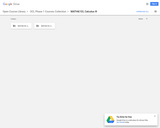
This contemporary calculus course is the third in a three-part sequence. In this course students continue to explore the concepts, applications, and techniques of Calculus - the mathematics of change. Calculus has wide-spread application in science, economics and engineering, and is a foundation college course for further work in these areas. This is a required class for most science and mathematics majors.Login: guest_oclPassword: ocl
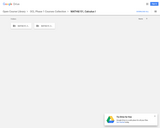
This course is an introduction to contemporary calculus and is the first of a three-part sequence. In this course students explore the concepts, applications, and techniques of Calculus - the mathematics of change. Calculus has wide-spread application in science, economics and engineering, and is a foundation college course for further work in these areas. This is a required class for most science and mathematics majors.Login: guest_oclPassword: ocl

This powerpoint contains guided reading questions as students read Jack London's Call of the Wild. It provides geographical background, images, and discussion questions to guide students in their reading.
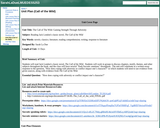
This unit plan outlines and provides all resources to study Jack London's Call of the Wild. Within this resource you will fine detailed daily lesson plans including handouts, discussion questions, and grading rubrics.
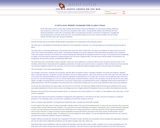
As the 19th century drew to a close, labor activists were forced to confront the implications of a long string of defeats suffered by their movement in recent years. One of the most venerable of labor editors, George McNeill, writing in the official journal of the American Federation of Labor (AFL) in December 1896, encouraged trade unionists to renew their commitment to a struggle that had not always been successful. At the same time, he accurately predicted an even more momentous battle in the next century between the trade unions and "the giant monopolies."
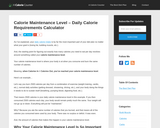
This resource helps to reinforce how caloric intake and exercise work together.
CALORIC REQUIREMENTS
Go to this website:
Read the article until you get to the “The Daily Calorie Requirements Calculatorâ€Â
Enter in your information on the website so you can answer the questions in number 5.
Choose one of the following articles to read:
To Lose Fat: How Many Calories Should I Eat Per Day To Lose Weight & Lose Fat?
To Build Muscle: How Many Calories Do I Need To Eat Per Day To Build Muscle Or Gain Weight?
To Maintain Your Weight How Many Calories Are Needed To Maintain My Current Weight?
Answer the following questions about your article from step 4. On a separate google doc answer the following questions completely and submit on Classroom.
What is your estimated daily calorie maintenance level?
What is your goal in regards to your weight? (Lose, Build, or Maintain) Why?
What did you learn from reading this information? What did you find interesting?
Do you feel you will be more conscious about your calorie intake/expenditure?
IF you use polar you can apply number 6
How many calories are you averaging during your workouts? Open up you polar go fit account to see the caloric expenditures.
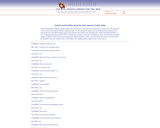
When 30,000 largely immigrant workers walked out of the Lawrence, Massachusetts, textile mills in January 1912, they launched one of the epic confrontations between capital and labor. The strike began in part because of unsafe working conditions in the mills, which were described in graphic detail in the testimony that fourteen-year-old millworker Camella Teoli delivered before a U.S. Congressional hearing in March 1912. Her testimony (a portion of which was included here) about losing her hair when it got caught in a textile machine she was operating gained national headlines in 1912--in part because Helen Herron Taft, the wife of the president, was in the audience when Teoli testified. The resulting publicity helped secure a strike victory.
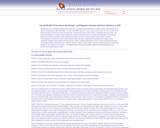
Although experimental telecasts began in the 1920s and commercial broadcasting made a tentative start in 1939, the television industry first blossomed after World War II. In 1949, one million sets were in use, mostly in urban areas. By the end of the 1950s, Americans had purchased more than 50 million sets. As with earlier forms of mass culture--especially radio and movies--the advent of television on a national scale brought forth a debate in popular forums on its quality, societal effects, and potential. While writer Paddy Cheyevsky in 1953 characterized television as "the marvelous medium of the ordinary," Federal Communications Commission Director Newton Minow, eight years later, charged that broadcasters had created "a vast wasteland" inhabited predominately with "game shows, violence, audience participation shows, formula comedies about totally unbelievable families, blood and thunder, mayhem, violence, sadism, murder, western bad men, western good men, private eyes, gangsters, more violence, and cartoons." The following article shows how a popular magazine assessed television's past, present, and possible future in 1960.

In the 1910s hundreds of thousands of African Americans headed North in the Great Migration. Arthur Dingle was one of them. Dingle was born in the small town of Manning, North Carolina, in 1891. After holding hotel jobs in several cities, he took a job with the Pennsylvania Railroad in Philadelphia. Promised his job back if he enlisted in World War I, the company made good on its promise when Dingle remained in Philadelphia after the war. This interview with Arthur Dingle was conducted by Charles Hardy in 1983 for the Goin' North Project.

In this nonfiction story, young readers and listeners learn how scientists use cross sections from trees to reconstruct past climates. Versions are provided for readers at two levels, k-2 and 3-5, and in text-only and illustrated formats. The story is also available as an electronic book with recorded narration. An original story is a regular feature of each issue of the free, online magazine Beyond Weather and the Water Cycle. The story can be used in science and literacy lessons and activities throughout the magazine.
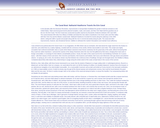
In the decades after the American Revolution, improvements in transportation facilitated the growth of internal commerce in the United States. State and local governments planned turnpikes, roads, and canals, and New York State built the grandest one of the era: the Erie Canal. The Erie Canal was constructed at public expense by thousands of laborers between 1817 and 1825. The canal stretched 364 miles from Albany to Buffalo and linked the new nation's heartlands in the Great Lakes and Ohio Valley with New York City and the Atlantic coastal trade. Nathaniel Hawthorne recorded his travels along the waterway in this 1835 sketch, noting the traffic in goods and people along with the rise in commercial activity along its path. The canal and other improvements, however, also threatened farmers 'abilities to withstand the market's fluctuations and maintain local sufficiency.
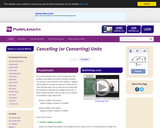
To convert between units, you're usually given one measure and asked to convert to another measure. For instance, you'll be given some volume in "gallons" and be asked to convert the volume to "fluid ounces". They will have given you (or else you can easily find) the conversion units that are suitable to the task.

This course is designed for users with a working knowledge of capital budgeting who want to improve their current practices. The course focuses on three stages of capital budgeting analysis. The purpose of the course is to introduce new concepts and ideas that will improve capital budgeting; such as option pricing and post audit analysis. Course Level: Intermediate and Advanced - Since this course goes beyond traditional capital budgeting analysis, it is recommended that users have an understanding of capital budgeting prior to taking this course. Recommended for 2.0 hours of CPE. Course Method: Inter-active self study with audio clips, self-grading exam, and certificate of completion.